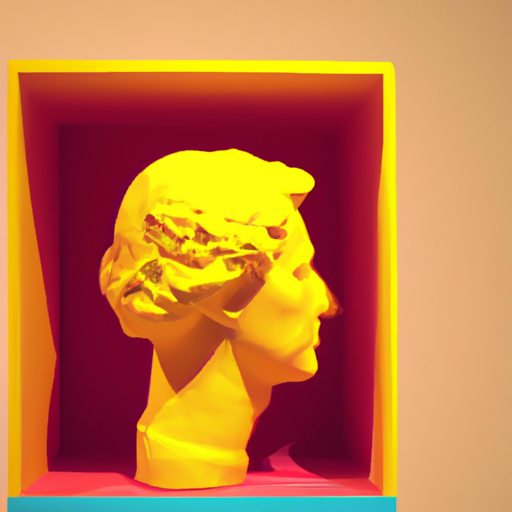-
Table of Contents
Sculpting Concepts: 3D Thinking in Design
Design is a multidimensional field that requires a unique blend of creativity, technical skills, and critical thinking. In recent years, the concept of 3D thinking has gained significant attention in the design community. This approach allows designers to visualize and manipulate ideas in three dimensions, enabling them to create more innovative and impactful designs. In this article, we will explore the importance of 3D thinking in design, its benefits, and how it can be applied in various design disciplines.
Understanding 3D Thinking
3D thinking is a cognitive process that involves mentally visualizing and manipulating objects or ideas in three dimensions. It goes beyond traditional 2D thinking, which is limited to flat representations. With 3D thinking, designers can explore the depth, scale, and spatial relationships of their concepts, leading to more comprehensive and refined designs.
One of the key aspects of 3D thinking is the ability to mentally rotate and transform objects in space. This skill allows designers to understand how different elements interact with each other and how they can be modified to achieve the desired outcome. By mentally manipulating objects, designers can identify potential design flaws, optimize functionality, and enhance aesthetics.
The Benefits of 3D Thinking in Design
3D thinking offers numerous benefits to designers across various disciplines. Let’s explore some of the key advantages:
- Enhanced Visualization: 3D thinking enables designers to visualize their concepts more accurately. By mentally constructing objects in three dimensions, designers can better understand their form, proportions, and spatial relationships. This enhanced visualization helps in creating more realistic and impactful designs.
- Improved Problem Solving: 3D thinking allows designers to analyze and solve complex design problems more effectively. By mentally manipulating objects, designers can identify potential issues and find innovative solutions. This approach encourages a more holistic and comprehensive problem-solving process.
- Efficient Communication: 3D thinking facilitates better communication between designers, clients, and stakeholders. By presenting designs in three dimensions, designers can effectively convey their ideas and intentions. This reduces the chances of misinterpretation and ensures that everyone involved has a clear understanding of the design concept.
- Iterative Design Process: 3D thinking promotes an iterative design process, where designers can quickly test and refine their ideas. By mentally manipulating objects, designers can explore different design variations and evaluate their impact. This iterative approach leads to more informed design decisions and ultimately results in better final designs.
- Integration of Form and Function: 3D thinking allows designers to seamlessly integrate form and function in their designs. By visualizing objects in three dimensions, designers can ensure that the aesthetics and functionality of the design are in harmony. This holistic approach results in designs that not only look good but also perform optimally.
Applying 3D Thinking in Design Disciplines
3D thinking can be applied across various design disciplines, including industrial design, architecture, graphic design, and product design. Let’s explore how this approach can be utilized in each of these fields:
Industrial Design
In industrial design, 3D thinking plays a crucial role in the creation of physical products. By mentally visualizing objects in three dimensions, industrial designers can optimize the ergonomics, aesthetics, and functionality of their designs. They can explore different design variations, test them virtually, and make informed decisions before moving to the physical prototyping stage. This saves time and resources, resulting in more efficient and successful product development processes.
Architecture
Architecture heavily relies on 3D thinking to create buildings and spaces that are not only visually appealing but also functional and safe. By mentally constructing buildings in three dimensions, architects can assess the spatial relationships, circulation patterns, and structural integrity of their designs. They can simulate natural lighting conditions, test different materials, and evaluate the overall user experience. This enables architects to create designs that are not only aesthetically pleasing but also meet the practical needs of the users.
Graphic Design
In graphic design, 3D thinking allows designers to create visually engaging and immersive experiences. By mentally visualizing designs in three dimensions, graphic designers can add depth, texture, and perspective to their work. This enhances the visual impact and creates a sense of realism. 3D thinking also enables designers to create interactive and dynamic designs, such as 3D animations and virtual reality experiences. These immersive designs captivate the audience and leave a lasting impression.
Product Design
Product designers leverage 3D thinking to create innovative and user-centric products. By mentally manipulating objects in three dimensions, product designers can optimize the form, functionality, and user experience of their designs. They can simulate the assembly process, test the ergonomics, and evaluate the usability. This iterative approach allows product designers to refine their designs based on user feedback and market demands, resulting in products that are not only visually appealing but also meet the needs of the users.
Conclusion
3D thinking is a powerful tool that empowers designers to create more innovative, impactful, and user-centric designs. By mentally visualizing and manipulating objects in three dimensions, designers can enhance their visualization, problem-solving, communication, and design processes. This approach can be applied across various design disciplines, including industrial design, architecture, graphic design, and product design. Embracing 3D thinking allows designers to push the boundaries of their creativity and deliver designs that truly resonate with their audience.
So, whether you are a designer looking to enhance your skills or a client seeking exceptional design solutions, embracing 3D thinking is the key to unlocking a world of possibilities in the realm of design.
